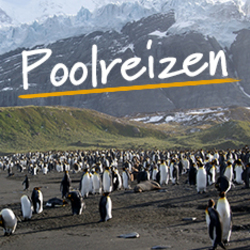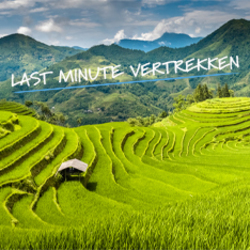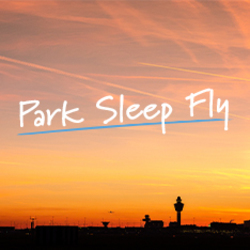Maak kans t/m 5 januari
BekijkFood
- All breakfasts and 6 dinners included. Umbria represents Italian home cooking at its best and the region's cuisine reflects its landlocked location. The distinctive taste of the region's olive oil and black and white truffles flavour many of the dishes. The origins of many of the dishes derive from thrift, for example, bruschetta comes from toasting stale bread, covering it with olive oil and rubbing it with garlic. Similarly, crostini are thin slices of toast with a smear of pate, usually made from chicken liver, anchovies and capers. Cooked and cured meats also have a fantastic reputation in the region. You will get to try many of these famous and delicious antipasti, which will then be followed by a 'primo' (a first course). In Umbria this is usually a pasta dish oozing with flavour. Wild asaparagus is popular in the spring and truffles feature more strongly in autumn. Secondi (second course) will then follow, the Umbrian preference is for grilled meats. Rapidly grilled spatchcocked rabbit and guinea fowl remain favourites. Desserts do not feature strongly on the Umbrian menu, cheese is often the post dinner preference and you will find the option to dip them in oil or honey. Meal times are usually later throughout the day (08:00-10:00 for breakfast; 13:30-15:30 for lunch; 20:00-22:00 for dinner). Wine also has a strong history in this region. It has been produced in Umbria since Etruscan times, when vines were first planted. Possibly the most unusual wine of the region is the Vernaccia di Cannara, a desert wine which is unlike any other as it is red.
Activities
- Self-Guided Cycling
- Cycling
- Ride Plus
- All breakfasts and 6 dinners included.Umbria represents Italian home cooking at its best and the region's cuisine reflects its landlocked location. The distinctive taste of the region's olive oil and black and white truffles flavour many of the dishes. The origins of many of the dishes derive from thrift, for example, bruschetta comes from toasting stale bread, covering it with olive oil and rubbing it with garlic. Similarly, crostini are thin slices of toast with a smear of pate, usually made from chicken liver, anchovies and capers. Cooked and cured meats also have a fantastic reputation in the region. You will get to try many of these famous and delicious antipasti, which will then be followed by a 'primo' (a first course). In Umbria this is usually a pasta dish oozing with flavour. Wild asaparagus is popular in the spring and truffles feature more strongly in autumn. Secondi (second course) will then follow, the Umbrian preference is for grilled meats. Rapidly grilled spatchcocked rabbit and guinea fowl remain favourites. Desserts do not feature strongly on the Umbrian menu, cheese is often the post dinner preference and you will find the option to dip them in oil or honey.Meal times are usually later throughout the day (08:00-10:00 for breakfast; 13:30-15:30 for lunch; 20:00-22:00 for dinner).Wine also has a strong history in this region. It has been produced in Umbria since Etruscan times, when vines were first planted. Possibly the most unusual wine of the region is the Vernaccia di Cannara, a desert wine which is unlike any other as it is red.
Food
-
1
Arrive at Spello
Arrive in picturesque Spello in time for dinner in your hotel's atmospheric restaurant. You stay at La Bastiglia Hotel (breakfast and evening meal)
-
2
Spello to Spoleto
Today is level cycling most of the way along the Teverone Valley with some of the best views of the week. We strongly recommend the short uphill detour to Trevi, a beautiful hilltop village dating back to Roman times and capital of the Umbrian olive oil industry. The ride then takes you to the centre of Spoleto to a really friendly 3-star hotel situated in a quiet area next to the Menotti Theatre and the contemporary art Museum. There are two bars , a reading room and Sauna/ massage Centre. Breakfast can be taken indoors or Al fresco. As its quite central there are plenty of restaurants and trattorie nearby.
-
3
At Spoleto
The historic city of Spoleto, apart from from being a great city of art, has buildings seemingly reflecting every major architectural style in history, including a Roman arch, a 10th Century church, 12th Century Duomo and a 80m high 14th Century aqueduct. The castle here was a former prison and now houses an impressive art museum. The archaeological museum houses many treasures and sculptures found in the Roman theatre as well as artefacts dating back to the Etruscans. The tourist office in Piazza Liberta can provide you with lots of useful information in English so it may be worth planning your day from here with what interests you. Of course, there are many lovely cafes and trattorie for lunch.
-
4
Spoleto to Marcellano
This morning we will climb up to Montefalco, the 'balcony of Umbria', it is a fair climb but well worth the effort! The town occupies a marvellously scenic position and on a clear day you can see as far as Perugia in the north. The town has retained its mediaeval atmosphere and structure. The church of San Francesco, now a museum, houses a fabulous 15th Century art collection. The town is perhaps most famous for its wine, you should arrive in plenty of time for lunch (the climb here is 5% up to 444m). There are lots of cheap trattorie or osterie serving the local wine. The Rosso di Montefalco is a popular choice, but by far the most intriguing vintage is that of the sagrantino. This is made using the sagrantino grape which is only found in Europe. It is well worth a taste while you admire the spectacular view. From here continue past lush green fields, poppies and buttercups before your last climb up to the mediaeval village of Marcellano. Your 4-star hotel is set within its own lovely gardens, with fabulous panoramic views across the entire valley.
-
5
At Marcellano
It's tempting to spend the day relaxing by the pool in the hotel's tranquil grounds, but it would be a shame to miss the Roman walled town of Bevagna (10mins by taxi; or you can cycle) - Umbria's hidden gem. Visit the 13th Century Gothic Palazzo dei Consoli, the golden mediaeval theatre, or the 2nd Century Roman temple and baths that include a spectacular lobster mosaic. Alternatively, you can opt for a circular cycle (optional ride approx. 22km - directions provided) to Ceralto Castle.
-
6
Marcellano to Torgiano
Not long after leaving Bevagna you will find yourself in the picturesque medieval village of Gualdo Cattaneo with its imposing 15th century castle and 13th century crypt. You can then enjoy some freewheeling before flat riding across the plains. There is a final ascent into the old wine town of Torgiano with its famous Lungarotti cellars. The local tipple, Rubesco Riserva, is now considered one of the best wines in the country. There is a museum dedicated to the history of wine making in the town and also one that is dedicated to the production of olive oil.
-
7
At Torgiano
Today is free to explore the tastes of the wine and olive oil production in Torgiano. Alternatively, if wine and olive oil don't take your fancy today, perhaps the renowned Baci chocolates of Perugia might tickle your taste buds? You can take the local bus or taxi (approx. 15 mins) to the university town, which is also famous for one of Italy's finest art collections. The town is picturesquely located on top of a commanding hill, high over the Tiber. For the more energetic there is an optional cycle ride (optional ride approx. 15 km - directions provided) to the capital of painted ceramics, Deruta.
-
8
Torgiano to Spello
Your last day's cycling takes you along the ‘Wine and Art Road’ to Brufa, with lovely views of Perugia and Assisi. The cycling then takes you through the Chiasco Valley, on country lanes passing sunflower fields, ochre-coloured farmhouses and meadows redolent with wild apricots and figs. You will enjoy spectacular views of Saint Francis' Basilica as you approach Assisi. It is worth setting some time aside to explore the fascinating streets of Assisi and enjoy an authentic lunch. Founded by the Umbrians and later taken over by the Romans it became Assium, from where its modern name derives. The most famous monument of the town is St Francis' Basilica, which ranks second only to St Peter's Basilica in Rome as a place of Catholic pilgrimage. The historic centre of the city is compact so it is easy to cover the main sites in an afternoon. The beautiful Piazza del Comune, the 13th Century Giotto frescoes and the well-preserved temple of Minerva are all well worth taking the time to look around. Once you are ready to leave you will cycle along the lovely traffic free Via degli Ulivi and through olive groves back to Spello.
-
9
Leave Spello
After breakfast, depart Spello.













































